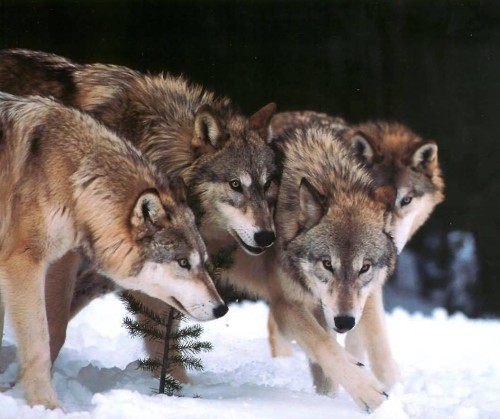In the previous post, we began exploring the world of self-organizations.
What are they and what are their peculiarities?
Different modes of collaboration correspond to different types of organization.
We are starting today by exploring THE RED ORGANIZATION.
The first examples of such organization go back about 10,000 years with the birth of the first “proto-empires” and the first forms of organizational life.
The individual ego is completely emancipated, the first differentiations of role and division of labor are made. There is the leader, and there are the soldiers. Slavery begins. Territories governed by tribes emerge, grouping even tens of thousands of people. Such situations still exist today both in tribal areas and in particularly poor areas of the modern society.

the characteristics
In the Red rganization, the organizational metaphor is the Wolf Pack.
Leadership comes across as predatory and the organizational structure is simple.
Nowadays, it could be associated with street gangs, the Mafia, albeit with some adaptation to modern life.
The leader is the one who holds the power and must demonstrate it without any sign of vulnerability or doubt. To provide stability, the leader surrounds himself with family members and buys their loyalty by sharing the “spoils”. Each family member ensures that the people below are aligned. In general, there is a lack of hierarchy and formal roles, and for that reason this organization does not have high scalability. Thus, the structure is extremely simple, informal, and the leader is in touch with all input and needs from the outside. From an organizational perspective, the structure that is generated at this stage can be compared to the “pioneer” stage: a simple structure which is typical of a fledgling organization.

Although these organizations can be very powerful in certain environments, they are actually fragile and unstable. The leader must always resort to public demonstrations of his power and manage the organization through fear and submission. “Mythical” stories related to the power of the leader circulate frequently to ensure that the “soldiers” maintain their line of conduct.

The Pioneer Phase (Lievegoed, 1973)
the decision-making model
The context in which Red organisations are best suited is the unordered, the domain of chaos. These organizations are poor at planning and strategizing, but very responsive to new opportunities: suited to chaotic situations (civil wars, failed states) but with little ability to handle real complexity. One peculiarity is that the chaotic context is often considered potentially suitable for producing real innovation. And this is not surprising since the decision-making model proposed in the Cynefin Framework is related to act – perceive – respond. The need to move quickly out of chaos requires immediate experimentation, and this can actually produce real innovation. Organizations that would like to experiment with fast and disruptive innovations could create ad hoc “chaos spaces” with low bureaucracy and formality.
Now that we have introduced you to the Red organization, we will look at the Amber organization in the next post.
Part 2: Amber organizations >>
Would you like to learn more
about the TEAL world?


